A Damp Sunday in Hull: My poston My London Diary for Sunday 29th July 2018 begins with the question “What do you do on a wet Sunday morning in Hull?” and goes on to answer it, and a second post shows how we spent a slightly less damp afternoon in the city. The pictures here with one exception are from that day.

Hull, thanks to the remarkable generosity of Thomas Robinson Ferens, (1847 – 1930), a Methodist, “industrialist and philanthropist, for whom ‘Reckitt’s Blue made Ferens’ gold'”. He lived simply and gave this wealth almost entirely “to worthy causes. In 1920 he was earning £50,000 a year and giving away £47,000 of that, and still teaching Sunday School every week.” Thanks to him Hull has a university with the motto “Lampada Ferens” (carrying the light of learning) and more to the point for wet Sunday mornings, one of the finest municipal galleries in the country, though I had plenty of time for breakfast before it opened at 11 am.

I didn’t photograph the fine exhibition then showing in the gallery of the work of Käthe Kollwitz or any of the other work on display, but went on to meet my wife in Hull Minster where there was an exhibition by the Mission to Seamen and the statue shown above of Lil Bilocca made from issues of the Hull Daily Mail by Gail Hurst. Bilocca was the leader of Hull’s Headscarf Revolutionaries, the Hessle Road Women’s Committee who took direct actioin after three Hull trawlers, St Romanus, Kingston Peridot and Ross Cleveland, sank with the loss of 58 lives in freezing North Atlantic seas around Iceland in January and February 1968.

They fought the trawler owners – and at times the fishermens’ union – to get better safety measures and went to Downing St and persuaded Harold Wilson and his Labour government to review the industry and bring in safety measures which saved thousands of lives. For which she was blacklisted and subjected to a campaign of abuse and hate until her early death in 1988, but is now widely recognised as a hero for her campaign.
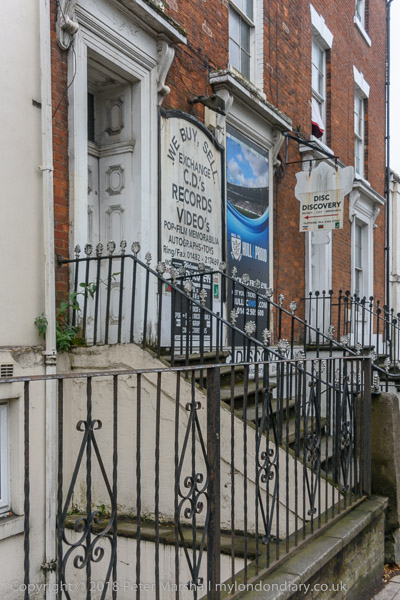
The rain had eased off after lunch as we walked along Spring Bank and through Hull General Cemetery on Spring Bank West to Chants on a combined nostalgia trip and on the Larkin trail.
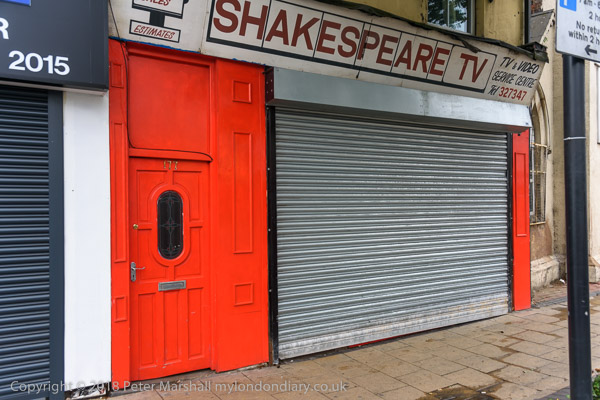
One of the surprises on Spring Bank was the return of Shakespeare, a TV repair shop which I had photographed in the 1980s but more recently had become a Portuguese grocers and, more recently a multicultural food shop. Though it was only the former shop sign and was soon to be covered by a new once for the food store.
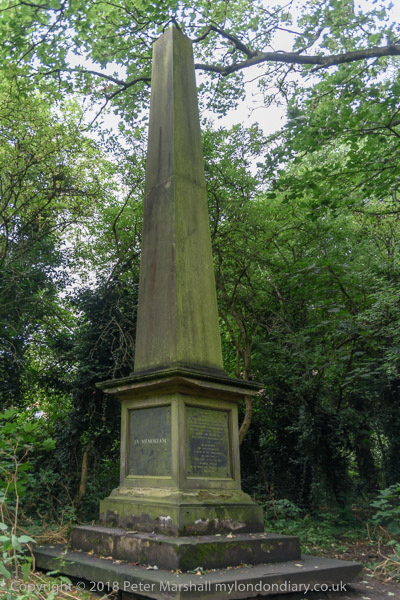
And in the cemetery which has been cleared a little – it now has friends, whearas before the council were more its enemies – I was pleased to again find the Monument to Cholera Victims. The 1849 outbreak in Hull killed 1,860 – one in 43 of the city’s inhabitants.
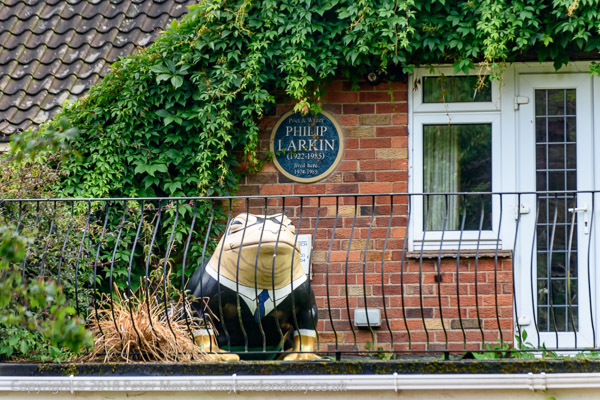
A short detour took us past Linda’s former home and through the Northern Cemetery to visit her family grave and then it was on to Newland Park, a wandering street in which Philip Larking lived in two houses. The entrance to the street has a plaque on the Larkin trail, and the second house he owned there has a plaque and a large toad.
Newland Park is Hull’s most expensive roads, close to the University, and as well as Larkin was also home as another plaque records for 9 years of De Eva Crane in whose house her the International Bee Research Association was formed.
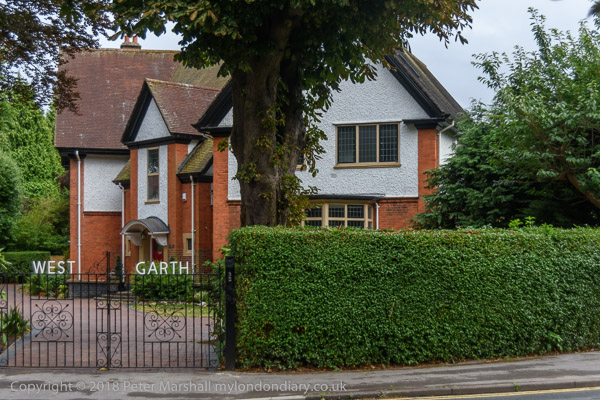
Architecturally of more interest is West Garth, a large ‘Arts & Crafts’ house designed by John Malcolm Dossor (1872-1940) who later became Lord Mayor of Hull. It has a ‘butterfly’ design, with wings at 45 degrees leading off from the central panelled entrance hall. The ground floor room closest to camera was the billiard room, with a full-size table and a bar.
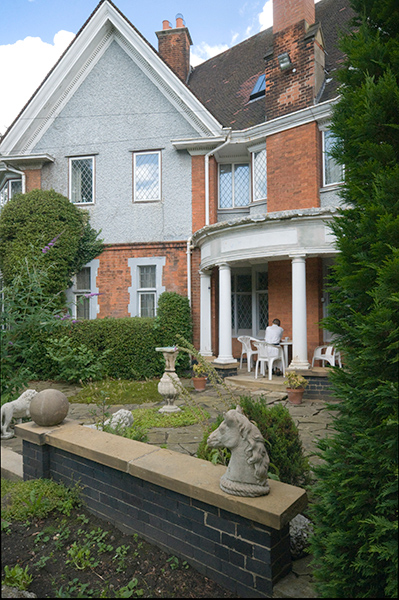
At the rear the wings enclosed a loggia, which was south-facing and acted as a sun trap, where we took afternoon tea when staying there – my wife was for some years a frequent visitor and I sometimes accompanied her. The building also had a fine library, and five large bedrooms. When sold for £620,000 on September 1, 2017 it was Hull’s most expensive house sale for the year, considerably more than the second most expensive (also in Newland Park,) which sold for £450,000.
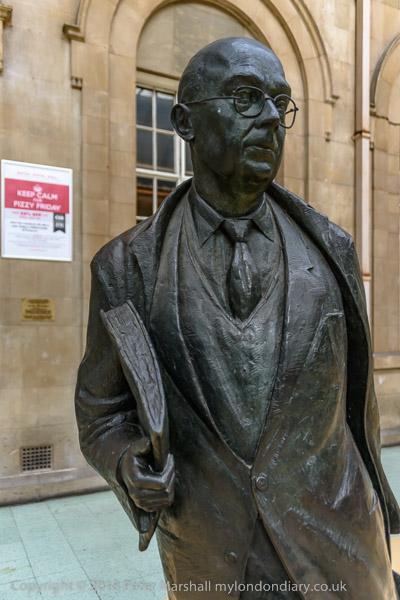
West Garth had been the childhood home of one of our friends and he moved back to Hull in later life, first buying Larkin’s first home in Newland Park (and where I think his lawnmower killed a hedgehog) and later moving back into West Garth, spending his last years trying to restore it to its original state aiming to get it listed, but sadly he died before the work was completed.
Our day ended at another of the locations on the Larkin trail, with dinner at the Royal Station Hotel. Originally built together with the station in an Italian Renaissance style, it opened as the Station Hotel in 1849, gaining the ‘Royal’ after Queen Victoria visited in 1853. We had stayed there on a previous visit to Hull, but on this occasion were at a more modern and cheaper venue a few minutes walk away.
Flickr – Facebook – My London Diary – Hull Photos – Lea Valley – Paris
London’s Industrial Heritage – London Photos
All photographs on this page are copyright © Peter Marshall.
Contact me to buy prints or licence to reproduce.